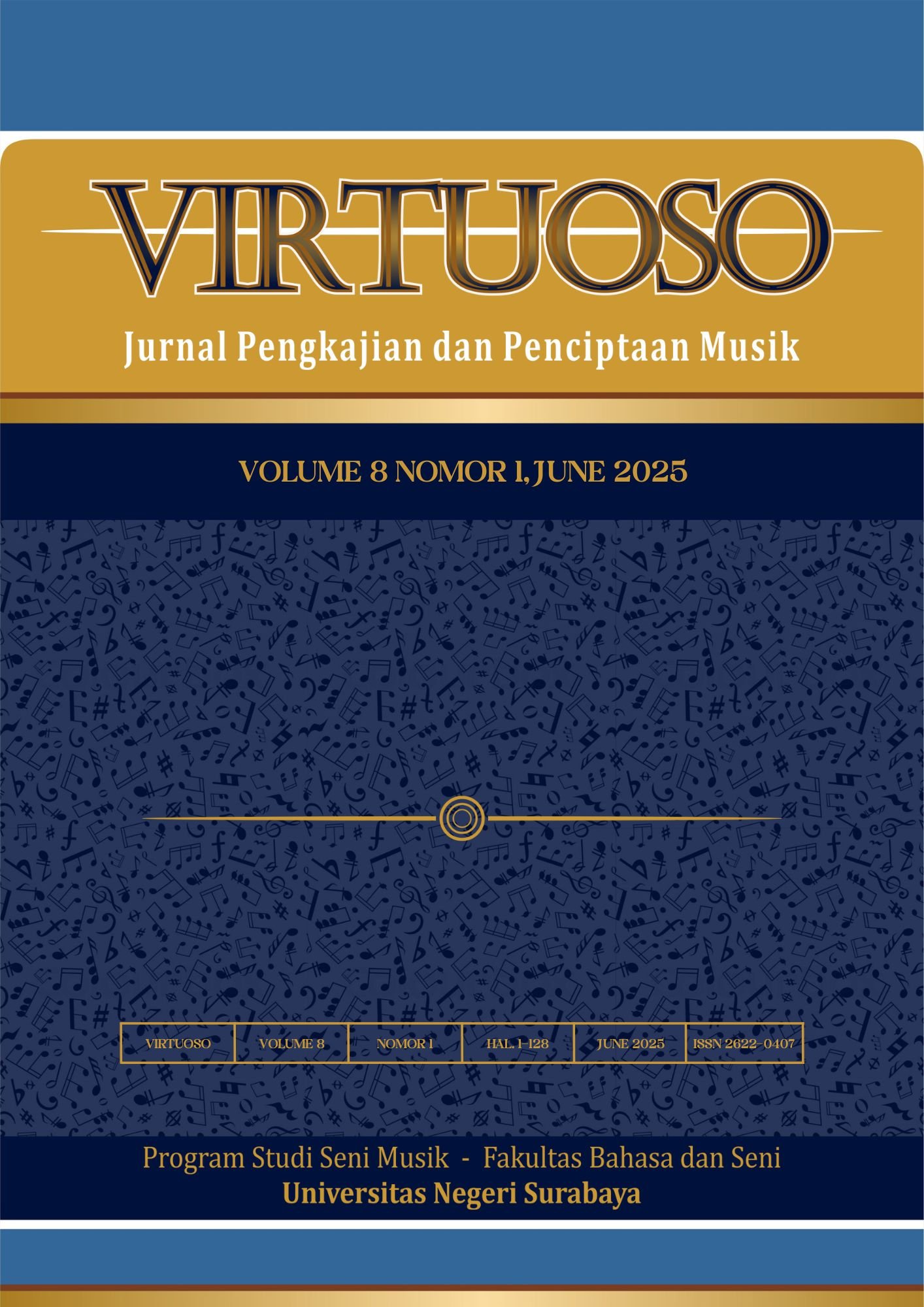The Structural Complexity In Liszt's Transcription of Beethoven's 'Eroica' Symphony
Main Article Content
Abstract
This study investigates Franz Liszt’s solo piano transcription of Beethoven's "Eroica" Symphony, focusing on the complex technical and interpretative challenges involved in adapting an orchestral work for solo piano. Beethoven's "Eroica" Symphony is widely celebrated for its innovative structure and thematic development, and Liszt's transcription represents an effort to make such orchestral masterpieces accessible to solo pianists while retaining their expressive depth and grandeur. The research employs a comparative musical analysis methodology to explore the balance Liszt achieved between faithfulness to the original orchestration and pianistic feasibility. The study examines technical transcription techniques, such as the adaptation of orchestral textures into pianistic idioms, including imitating orchestral effect, descending octaves, and the mixing of voices to evoke the orchestral richness. Findings indicate that Liszt’s transcription is a transformative recreation rather than a simple reduction, showcasing his creative approach to translating orchestral music for piano. By preserving the formal structure while adapting textural and dynamic elements to suit the piano's capabilities, Liszt’s work exemplifies the delicate balance between fidelity to the original and artistic reinterpretation. This study contributes to the broader field of transcription studies by addressing gaps in the existing literature, particularly regarding the technical and interpretative strategies involved in transcribing orchestral music for a solo instrument.
Downloads
Article Details

This work is licensed under a Creative Commons Attribution-NonCommercial-ShareAlike 4.0 International License.
The copyright of the received article once accepted for publication shall be assigned to the journal as the publisher of the journal. The intended copyright includes the right to publish the article in various forms (including reprints). The journal maintains the publishing rights to the published articles.
References
Agawu, V. K. (2009). Music as discourse: Semiotic adventures in romantic music. Oxford University Press.
Botstein, L., & Stanley, G. (2000). Sound and Structure in Beethoven’s Orchestral Music. The Cambridge Companion to Beethoven, 165–185.
Bowen, J. A. (1996). Tempo, duration, and flexibility: Techniques in the analysis of performance. Journal of Musicological Research, 16(2), 111–156.
Caplin, W. E. (1998). Classical form: A theory of formal functions for the instrumental music of Haydn, Mozart, and Beethoven. Oxford University Press.
Clubbe, J. (2014). The Eroica in its Revolutionary Context: Seume’s Spaziergang nach Syrakus. The Beethoven Journal, 29(2), 53.
Colton, D. G. (1992). The Art of Piano Transcription as Critical Commentary [Doctoral dissertation]. McMaster University .
Cook, N. (2013). Beyond the score: Music as performance. Oxford University Press.
Deng, M. (2020). The spirit and the letter: Schubert-Liszt transcriptions [Doctoral dissertation]. ResearchSpace@Auckland.
Djahwasi, H. R., & Saidon, Z. L. (2021). An Analysis of Artistic form and Musical Perspective of Romantic Era Music. International Journal of Academic Research in Business and Social Sciences, 11(11), 771–782.
Djahwasi, H., Sampurno, M. B. T., Saidon, Z. L., & Anggoro, R. R. M. K. M. (2024). Interprtative Lens of Segovia’s classical guitar transcription on Bach’s Chaconne from Partita No. 2 in D Minor Bwv 1004. Rast Musicology Journal, 12(4), 419–444.
Goehr, L. (1992). The imaginary museum of musical works: An essay in the philosophy of music: An essay in the philosophy of music. Clarendon Press.
Gossett, P. (2017). Beethoven’s Sixth Symphony: Sketches for the First Movement. In Beethoven (pp. 213–249). Routledge.
Gritten, A., & King, E. (2006). Music and gesture. Ashgate Publishing, Ltd.
Howard-Jones, E. (1935). Arrangements and transcriptions. Music & Letters, 16(4), 305–311.
Howat, R. (2009). The Art of French Piano Music: Debussy, Ravel, Fauré, Chabrier. Yale University Press.
Hurwitz, D. (2021). Beethoven’s orchestral music: an owner’s manual. Rowman & Littlefield.
Kerman, J. (2009). Contemplating music: Challenges to musicology. Harvard University Press.
Kregor, J. (2010). Liszt as transcriber. Cambridge University Press.
Le, D.-V.-T., Giraud, M., Levé, F., & Maccarini, F. (2022). A corpus describing orchestral texture in first movements of classical and early-romantic symphonies. Proceedings of the 9th International Conference on Digital Libraries for Musicology, 27–35.
Leong, D. (2019). Performing knowledge: Twentieth-century music in analysis and performance. Oxford University Press.
Madsen, C. A. (2003). The Schubert-Liszt Transcriptions: Text, Interpretation, and Lieder Transformation. University of Oregon.
Mathews, P. (2006). Orchestration: an anthology of writings. Routledge.
Miller-Kay, E. (2018). Four-hand piano transcriptions and the reception of symphonic repertoire in nineteenth-century Europe. Malaysian Journal of Music, 7, 195–207.
Notley, M. (2010). Musical arrangements and questions of genre: a study of Liszt’s interpretive approaches [Doctoral dissertation]. University of North Texas.
Rink, J. (1992). The practice of performance: Studies in musical interpretation. Cambridge University Press.
Rosen, C. (1988). Sonata forms. WW Norton & Company.
Samson, J. (1994). The Cambridge Companion to Chopin. Cambridge University Press.
Schab, A. (2022). A Performer’s Guide to Transcribing, Editing, and Arranging Early Music. Oxford University Press.
Taruskin, R. (1995). Text and act: Essays on music and performance. Oxford University Press.
Walker, A. (1987). Franz Liszt: The Final Years, 1861-1886 (Vol. 3). Cornell University Press.
Walker, A. (2005). Reflections on Liszt. Cornell University Press.
Zolotareva, N. S. (2018). Paraphrase in the Genre System of Piano Transcriptions of Franz Liszt. Вісник Національної Академії Керівних Кадрів Культури і Мистецтв, 3, 282–287.

